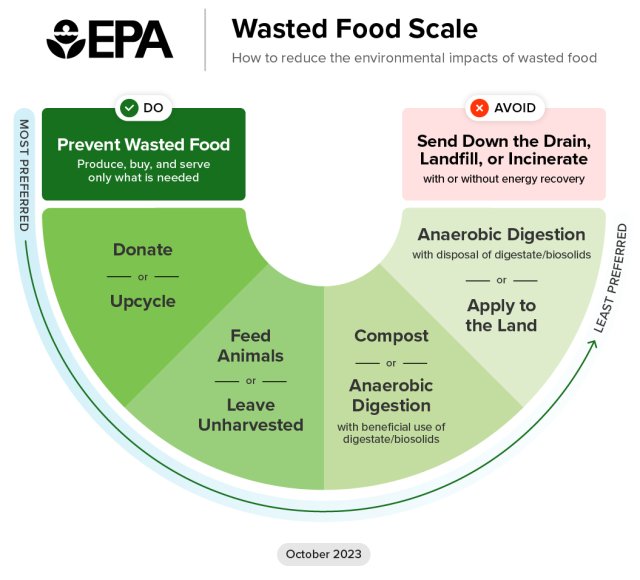Home » Community Food Systems » Dane County Food Action Plan » Dane County Food Action Plan Sectors » Food Waste Sector
Food Waste Sector

Key Updates – September 4, 2025
In recent years, attention is increasingly being focused on the food waste component of our current food system, though there is still a long way to go to shore up this part of the process. Locally, there are many Dane County organizations working hard to not only reduce food system waste, but also to use valuable excess food products to alleviate food insecurity in our community. Here are some of the key themes in this sector.
Scaling Up Food Waste Diversion
The Dane County landfill is filling up and will reach its maximum capacity by 2030. Around a third of the material that goes to the Dane County landfill is food and yard waste. About a third of the food that goes to the landfill was edible at the point it was discarded. This highlights an important need for food waste diversion.
In addition to building a new landfill, Dane County Waste & Renewables is building out an extensive sustainability campus with a focus on waste diversion. The EPA Wasted Food Scale shows multiple alternatives to sending food to the landfill in order of most preferred to least preferred. Dane County Waste & Renewables has also launched several food waste composting drop-off sites and is building out commercial and institutional food waste pick-up.
Optimizing Food Recovery and Donation Systems
The most preferred options on the EPA Wasted Food Scale are Preventing Wasted Food and Donating or Upcycling. Food recovery efforts focus on these activities and work hard to divert edible food from the waste stream. Food recovery in Dane County has been occurring since the early 1990s. Currently, one of the key coordinators of food recovery in Dane County is Healthy Food for All (HFFA), which recovers more than 1 million pounds of food per year from commercial kitchens, catering, farmers markets, farms, grocery stores, and retail. There are also several food pantries throughout Dane County that recover food. One major inequity for food pantries engaged in food recovery is that the burden of managing the food waste component becomes transferred to their operations. Food recovery and donation systems are a key area to be strengthened.
Increasing Education and Program Cohesion for the Public
One major component of increasing the prevention of wasted food, recovering food, and diverting food waste is education about all of these activities. This includes both education for individuals—as well as food retail businesses. Education about preventing wasted food would focus on carefully-planned purchasing, as well as having plans and partnerships in place for managing excess food. Also, for food waste composting programs to be successful, extensive education is needed to ensure proper compliance and prevent contamination.




